|
SocialLearningTheory
|
|
By Krista Brown
|
|
Discovery
|
|
*
|
|
Albert Bandura
|
|
(1965, 1969)
|
|
*
|
|
Social Learning
|
|
-the concept that takes place when we learn how
|
|
to behave a certain way from observing other’s
behaviors
|
|
around us and the environmental outcomes of their
behavior.
|
|
* Studied children through
|
|
Bobo doll experiment
|
|
: children
|
|
watched films with an adult interacting with an
inflatable toy
|
|
called a Bobo doll
|
|
* If an adult acted aggressively and got a reward for
his/her
|
|
behavior, the child was more likely to behave
aggressively
|
|
toward the doll. If adult got punished the child was
less likely
|
|
to behave aggressively.
|
|
* Therefore humans basically learn much of their
behavior by
|
|
observation--which leads to acting on what they
observe or
|
|
rejecting what they observe.
|
|
Modeling
|
|
* Most human behavior is learned by observing
|
|
models
|
|
* When people observe others, they form an idea of how
new
|
|
behaviors are performed, as they get older it serves
as a
|
|
guide for action. (other Bobo doll experiment)
|
|
*
|
|
It is our goal as teachers to serve as positive role
models
|
|
and to make it known to children/students that they
can
|
|
look up to us.
|
|
* Expert teachers try to overcome negative role
modeling, by
|
|
making sure that 4 certain conditions are met...
|
|
Four key principals for S.L. to happen
|
|
(1)
|
|
ATTENTION
|
|
*
|
|
: in order for a child to learn behavior,
|
|
he/she needs to be paying attention to the behavior
|
|
observed.
|
|
* How can we grab a students attention?
|
|
– Enthusiasm
|
|
– Passionate about what you teach
|
|
– Creative activities
|
|
* Models that have positive/engaging qualities are
sought out--while
|
|
those lacking pleasing characteristics are
rejected/ignored.
|
|
Second Principal
|
|
*(2)
|
|
Retention
|
|
: retaining/remembering what he/she observed
|
|
when later having the opportunity to act in the same
way.
|
|
* People cannot be much influenced by observation if
they do
|
|
not remember the modeled behavior.
|
|
*How can we as teachers make sure our students
remember?
|
|
– Memory techniques
|
|
– asking them to state what they observed
|
|
– asking them to describe how they saw a teacher
handle a
|
|
certain kind of task
|
|
* The clearer students can state what they observed,
the
|
|
deeper they understand it.
|
|
Third Principal
|
|
*(3)
|
|
Motivation
|
|
: Individuals need to be motivated to copy the
|
|
observed behavior.
|
|
* People do not enact everything they learn, they are
more
|
|
likely to adopt a certain behavior if the outcomes
they value
|
|
are resulted than if it has unrewarding or punishing
effects.
|
|
* How can we motivate our students?
|
|
* Give them reasons to behave that way
|
|
*
|
|
1-Direct reinforcement
|
|
: when students behave the way you
|
|
want, reward them.
|
|
*
|
|
2-Vicarious reinforcement
|
|
: when students watch someone else
|
|
getting rewards
|
|
*
|
|
3-self-reinforcement
|
|
: rewards people give themselves when
|
|
they know they behaved the way the teacher wished.
|
|
Fourth Principal
|
|
*
|
|
Potential for modeling:
|
|
Individuals need to be mentally and
|
|
emotionally capable of doing what you desire them to
do, not
|
|
only physically.
|
|
* Salience of the model
|
|
* Liking and Respecting model
|
|
* Similarity
|
|
*Reinforcement
|
|
*Self-regulation--ability for student to control their
own
|
|
behavior.
|
|
* Social Learning can help students how to look over
their own
|
|
shoulders and behave in a positive way.
|

















Social Plugin